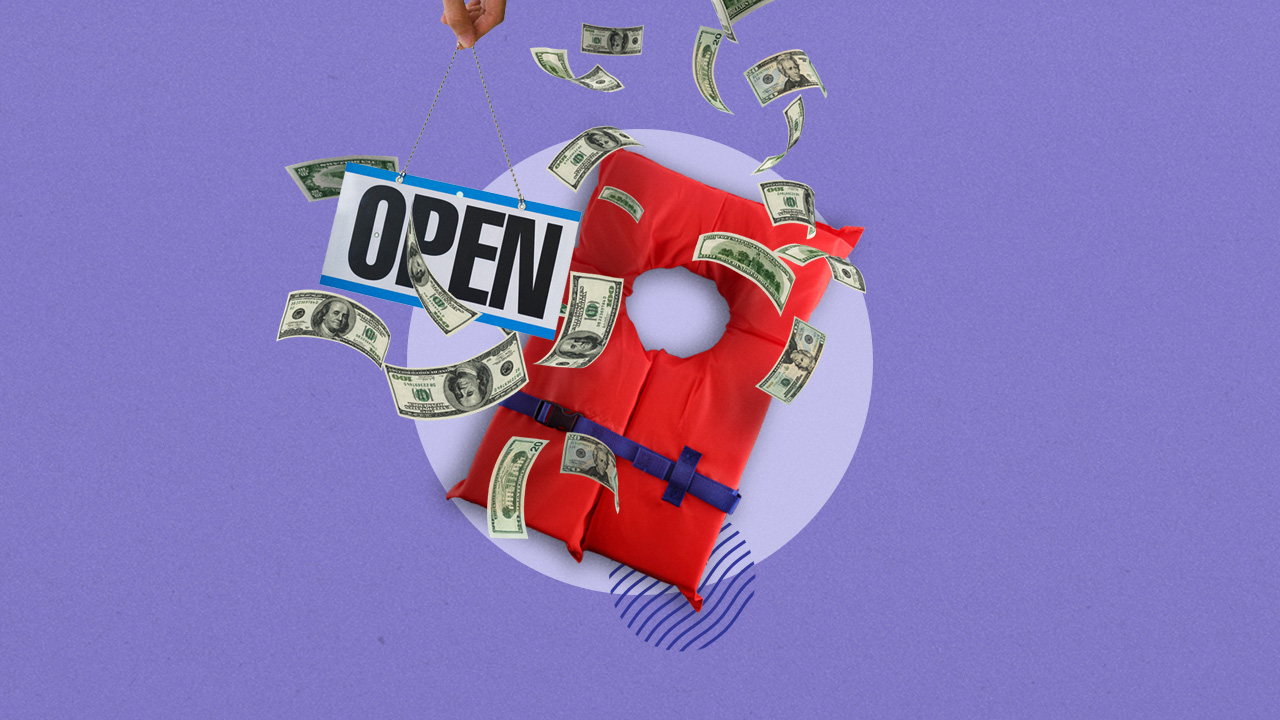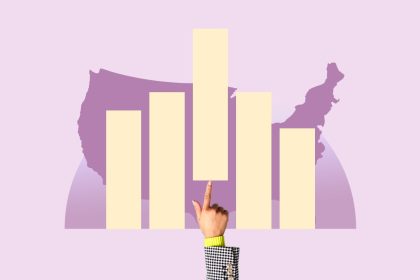Key takeaways
- Bad credit business loans are high-risk loans for borrowers with personal credit scores under 669
- These types of loans can have high interest rates and additional fees
- Alternatives include grants, business credit cards and crowdfunding
A business loan for bad credit can provide small business owners with much-needed financing. These loans can help purchase equipment, fund day-to-day operations or expand your business. The right bad credit business loan can also help you build credit and improve your credit score.
Getting a business loan when you have bad credit can be a challenge. These loans have higher interest rates, and you may have to jump through more hoops to get one compared to business loans for people with good or excellent credit. To find the most affordable option, you’ll need to shop around and compare lenders. You’ll also need to make sure you select the right type of business loan.
Read on to learn more about the types of bad credit business loans you may be eligible for and how each option works.
Term loans
Term loans provide a lump sum of cash that is repaid at fixed intervals with interest. These loans are offered by banks, credit unions and alternative online lenders.
Compared to other types of business financing, term loans typically have lower interest rates. They’re often used to fund significant purchases or long-term investments in your business.
Repayment terms depend on the type of loan. For instance, you may only have two years or less to repay short-term business loans, while medium-term loans have repayment terms of up to five years. There are also long-term business loans, which may offer 10 to 20 years to repay the debt.
Online lenders tend to be more willing to work with business owners with less-than-ideal credit. Some have minimum credit score requirements of just 500, but the loan amount will likely be lower than what traditional banks offer.
Secured loans vs. unsecured loans
Business loans can be secured or unsecured. Secured loans require you to put up an asset as collateral to back the loan. This collateral might be equipment, invoices or property.
Providing personal or business collateral makes a lender feel more confident in giving a loan to an applicant with a risky credit profile. You may even get better rates and terms if you provide collateral. That’s because if you default on the loan, the lender can seize the collateral.
Unsecured business loans, on the other hand, do not require providing collateral to obtain the loan. As a result, interest rates are typically higher. And because they are unsecured, you’ll need a better credit score to get approval for this type of loan.
Although you won’t need collateral, your lender may request that you sign a personal guarantee, making you personally responsible for the loan if the business defaults.
Lines of credit
A business line of credit is similar to a business credit card. Rather than providing a lump sum distribution, a business line of credit offers access to revolving funds that can be used as needed, repaid, and then used again.
A line of credit comes with a credit limit and a draw period. You’re only required to pay interest on the money you borrow during the draw period, not the entire credit line amount extended. After the draw period ends, no more money can be used. The repayment period for credit lines ranges from lender to lender and can be from three months to five years.
There are both secured and unsecured lines of credit. For newer businesses or those with less established or poor credit, a lender may require collateral to secure the line of credit. And if you fail to repay the money borrowed as agreed, the lender can seize the asset you provide as collateral.
Bankrate insight
SBA business loans for bad credit
The U.S. Small Business Administration guarantees loans that can be used to cover most small-business needs. This includes working capital, inventory, real estate and even business debt consolidation. Despite drawbacks like a lengthy application process and slow funding, these government-backed loans can be worth the effort and patience since they come with long repayment terms and low interest rates.
There are several types of SBA loans. Some have relaxed eligibility requirements that can help business owners with bad credit. This includes SBA microloans, which have loan amounts of up to $50,000 and interest rates typically between 8 percent and 13 percent. A large portion of SBA microloans go to support business owners in underserved communities. Some lenders only require a personal credit score of 500; others may have no credit score requirement, though you may need two years in business and collateral.
Some lenders may offer SBA 7(a) loans to business owners with bad credit. For example, Lendio has a minimum credit score requirement of 600. Fundible states on its website that small business owners only need a credit score of 500 when applying for an SBA loan.
Bankrate insight
Microloans
Microloans are small business loan amounts of $500 to $50,000. These loans are often provided and managed by local non-profit community development organizations and backed by the Small Business Administration (SBA). Some online lenders also offer microloans.
The requirements to qualify for a microloan are often far more flexible than traditional loans. Many do not require an extensive credit history, making them a good fit for businesses just starting and any that may need help to qualify for traditional financing. The repayment terms for these loans typically range from six months to as long as six years.
Equipment financing
Equipment financing is similar to an auto loan. With this type of loan, the equipment acts as collateral, so you don’t have to find additional assets to put up as security. And since the equipment helps back the loan, some lenders are more open to working with business owners with poor credit.
Like term loans, these loans can be found at banks and online lenders and are typically repaid in fixed monthly installments. Repayment terms are generally anywhere from three to 10 years.
Bankrate insight
Notable lenders offering bad credit business loans include:
- Fundible: Fast prequalification and loan amounts ranging from $5,000 to $5 million and terms of 6 to 120 months
- Credibly: Specializes in short-term loans ranging from $25,000 to $400,000
-
Backd: Provides business loans from $5,000 to $750,000 with terms of 6 to 12 months
Invoice financing
Invoice financing involves using your accounts receivables — meaning unpaid invoices owed to your business by clients — as collateral for a short-term cash advance from a lender. A lender will advance you up to 85 percent to 90 percent of the amount owed on an invoice. Once your client pays the invoice, you repay the lender the advanced money plus fees. Typically, the fees a lender charges are a percentage of the invoice amount.
Invoice financing can be a more accessible business loan for startups with bad credit since invoices back the loan. But the cost to borrow money this way can be steeper than other types of lending.
Invoice factoring
With invoice factoring, you sell your invoices to an invoice factoring company. In exchange, the factoring company will pay you as much as 85 percent to 90 percent of the value of those invoices. Once the invoice is paid, the lender sends you the remaining amount minus fees.
Your credit score or history of repaying debts is not necessary to qualify for invoice factoring because unpaid invoices back the loan. Instead, the lender will review the client whose invoices you want to sell to ensure that the client has a solid track record of repayment.
Merchant cash advance
A merchant cash advance (MCA) is a form of short-term borrowing typically offered by online lenders. MCAs provide small businesses with a lump sum of money. The money is an advance against your business’s future debit and credit card sales. In order to recoup the money, the lender will take a share of your daily debit and credit card sales, including its lending fees, until the advance has been repaid in full.
It’s possible to qualify for MCAs with a credit score of 500 and maybe even lower. In order to get approved, you’ll be required to provide information about your business and its income from credit card and debit card sales.
While MCAs are accessible, the fees associated with this type of borrowing are typically much higher than traditional loans. The steep fees associated with merchant cash advances, as well as the short repayment timelines and the fact that you’re selling a portion of your future sales, can sometimes create a cycle of debt that is hard to escape.
Bankrate insight
Compare pros and cons of bad credit business loans
Pros
- Accessible financing
- Fast approvals and funding times
- Rebuild credit
Cons
- Lower loan amounts
- Higher interest rates and fees
- Collateral requirements
Pros and cons of bad credit loans
When you’re ready to get a business loan for bad credit, make sure you fully understand what you’re signing on for, including all of the potential benefits and drawbacks. Here’s a look at the pros and cons of bad credit business loans.
Pros
- Accessible financing: Many of the loans and borrowing options available for bad credit allow applicants to qualify based on alternative criteria, such as collateral or future business receipts.
- Fast approvals and funding times: Alternative online lenders provide fast funding even to business owners with bad credit. In some cases, you can see funds in just a few days.
- Rebuild credit: Timely payments on business loans can bolster your credit score, as many lenders report payment history to major personal or business credit bureaus.
Cons
- Lower loan amounts: When using microloans or other types of lending as a bad credit borrower, you may not be able to access large loan amounts.
- Higher interest rates and fees: Even the best bad credit business loans will likely have steep interest rates and additional fees.
- Collateral requirements: Some bad credit loans require that you provide collateral, which can be risky. If your financial circumstances change and you’re unable to repay the loan, you risk losing that asset.
Alternatives to bad credit business loans
If a bad credit business loan doesn’t sound like a good fit for you, here are a few other options to consider.
- Small business grants. Grants are sometimes available for small businesses from state, local and federal government entities. This type of funding may also be available from non-profit organizations or local community organizations. Business grants typically do not need to be repaid, but you’ll have to participate in what is typically a highly competitive application process. There are even grants for minorities, women and veterans.
- Business credit cards. Some credit card issuers provide secured and unsecured credit cards specifically for business owners with poor credit and may consider applicants with a personal credit score as low as 300. When used responsibly, opening a credit card can help build or rebuild your credit score and establish a relationship with a lender. Some credit cards for bad credit even offer benefits such as cash back and free employee cards.
- Personal loans. Many lenders, including banks, credit unions and online lenders, offer personal loans for bad credit borrowers, which may require collateral or come with unsecured options. However, some personal loans may have usage restrictions, so it’s important to verify a personal loan can be used for business purposes. Despite potentially higher interest rates, bad credit loans can still be preferable to credit cards with steep interest rates.
- Crowdfunding. This involves raising money via many different people who make small donations or investments. Crowdfunding often takes place via an online platform or website designed for this purpose and is a time-limited campaign. Raising money this way does not require providing your credit score. Instead, money will come from people who have a specific interest in your business or project.
Bottom line
The best bad credit business loans are an option for business owners with fair or bad credit. They may also be an option for startups that struggle to meet typical lending requirements. But the fees and interest rates associated with some of the options are steeper than others, so do your due diligence and shop around for the best possible deal.
Frequently asked questions about high-risk business loans
-
Yes, some online lenders offer loans for applicants with credit scores as low as 500. These may have to be secured loans that are backed by a valuable asset, which is used as collateral.
-
If you have bad credit, there are a few different types of business loans to consider. Invoice factoring and financing are good options because lenders are more concerned with the creditworthiness of the businesses that owe you money. Similarly, when applying for a merchant cash advance, your credit score is not as important for lenders. Equipment financing is another option, as these loans are backed by the equipment being purchased.
-
Business collateral is an asset owned by your business that is used to secure a loan. Examples of collateral include property, equipment and outstanding invoices. The lender can seize the collateral you use to secure a loan should you fail to repay the loan as agreed.
Read the full article here

















